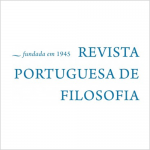The Anatomical Foundations of Tommaso Campanella’s Theory of Magic
2010, Tomo 66, Fasc. 1. • Revista Portuguesa de Filosofia
Autor: GUIDO GIGLIONI
Abstract:
The aim of this article is to examine some of the anatomical implications of Campanella’s theory of magic, focusing in particular on his critique of Aristotle’s and Galen’s anatomical views. By magic Campanella meant first and foremost communication of energy and knowledge. It is no accident that he viewed both medicine and rhetoric as constitutive disciplines of magic. In doing so, he appealed to the time-honoured notion of the magic of the word theorised in ancient times by the sophist Gorgias. The distinctive feature in Campanella’s system of magic is that the word is both a symbolic and a physical entity. Meaning flows from nature to the mind and from the mind to nature. Words are both carriers of meanings and physical agents of psychosomatic transformation. As can be demonstrated by pointing to such paradigmatic cases as natural divination and prophecy, the force of the imagination, the patient’s trust in the power of the physician or the healer, and the many influences that air exercises on the body, Campanella’s theory of magic rests on a definite anatomo-physiological basis. The most original aspect, though, is the way in which Campanella reinterpreted Aristotle’s and Galen’s principles of anatomy so that he could adapt his medical views to the broader framework of his theory of magic (practice), on the one hand, and metaphysics (theory), on the other. In addition, Campanella’s original account of emotions and passions supported a comprehensive system of magical practice that dispensed with the basic principles of both Aristotle’s and Galen’s physiology. Campanella was convinced that the vital operations of the body could not be explained by simply relying on the unsentient functions of the vegetative soul (Aristotle) or on the natural faculties of the body (Galen), nor could they be accounted for by assuming the existence of incorporeal souls (Aristotle) or bodily temperaments (Galen). By circumventing both Aristotle’s hylomorphism and Galen’s vital materialism of the temperaments, and by appropriating the Stoic view of rational pneuma, he managed to produce a physiological model that was more flexible in dealing with the complex interplay of knowledge, action and appetite, and above all, better suited to account for a universe in which the flow of life and meaning encompassed various levels of communication.
Palavras-Chave: natural magic,medicine,rhetoric,passions,perc

Revista Portuguesa de Filosofia
A Revista Portuguesa de Filosofia (RPF) foi fundada em 1945 por Domingos Maurício, SJ; Cassiano Abranches, SJ; Severiano Tavares, SJ e Diamantino Martins, SJ. É uma publicação trimestral da Axioma - Publicações da Faculdade de Filosofia.
A RPF, sendo de inspiração cristã, tem por missão a publicação de artigos inéditos de reconhecido mérito, aceitando textos de qualquer horizonte de pensamento, em qualquer área de filosofia, escritos nas principais línguas europeias (português, inglês, francês, alemão, espanhol e italiano). Todos os artigos são revistos inter pares (peers review), mediante o sistema de avaliação anónima (double-blind).
Os artigos publicados na RPF são indexados e referenciados pelas seguintes bases de dados e repertórios bibliográficos: The Philosophers's Index (Ohio, USA); International Philosophical Bibliography / Répertoire Bibliographique de la Philosophie (Louvain, Bélgica); Francis-Bulletin Signalétique (CNRS, INIST - França); Ulrich's International Periodicals Directory (New York, USA); Internationale Bibliographie Geistes und Sozialwissenschaftlicher Zeitschriftenliteratur (IBZ - Alemanha); Dialnet (Logroño, Espanha); JSTOR (Michigan, EUA).
